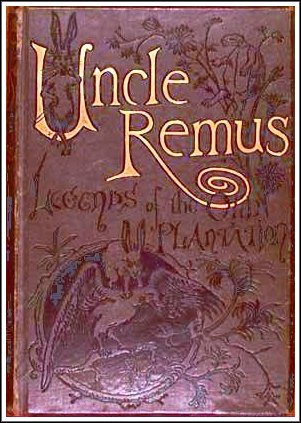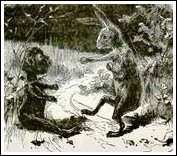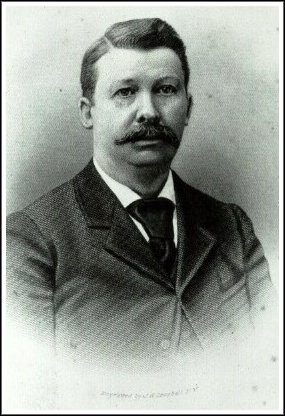Uncle Remus and Racism
Cover of First Book 1880

Many may remember reading the sometimes humorous and engaging tales of Uncle Remus in their youth. They were written by Joel Chandler Harris, an American journalist, fiction writer, and folklorist in post reconstruction Atlanta. He is best remembered for his stories narrated by the fictional character, Uncle Remus.
Harris was born in Eatonton, Georgia, sometime between 1845 and 1848. He wrote seven Uncle Remus books featuring the characters of Br'er Rabbit and Br'er Fox as well as songs and poems. Br'er was a common pronunciation of brother in the post American Civil War era by slaves. And although he had little formal education he managed to become an accomplished writer.
The stories he wrote came from tales told to him as a youngster by several elderly slaves about Br'er Rabbit and Br'er Fox, who are continuously at odds with each other and other “critters” in the Briar Patch. Perhaps, one of his most beloved tales is “The Wonderful Tar-Baby Story,” which can be traced back to a similar myth told by Cherokee Indians.
In this story, Br'er Fox takes a mound of tar and puts clothes on it and places it next to a road where it can easily be seen. Br'er Rabbit eventually comes along and becomes insulted because the tar baby refuses to talk to him. Br'er Rabbit becomes angered at the lack of respect being shown him and begins to hit the tar baby. Of course, he becomes stuck, much to the delight of Br'er Fox who pokes fun at his predicament.

Now that Br'er Rabbit is stuck, Br'er Fox ponders what to do with him. But the clever rabbit pleads with him not to throw him in the briar patch. So, naturally that’s what the fox does. However, a briar patch is a natural habitat of rabbits and so Br'er Rabbit escapes. With humorous works such as this, Harris was able to focus attention on issues concerning slavery, white supremacy and racial overtones of the times.
It has been suggested by literary experts racial tensions are represented by one animal being stronger, Br’er Fox, and one weaker, Br’er Rabbit. The interpretation is the rabbit represents the slaves and the fox, their white masters. The lesson learned is the weaker can often triumph over a physically superior force by using their intellect.
Through his work Harris also introduced the vernacular many southern slaves spoke to the world in 27 different languages. Harris always insisted the dialect was historically accurate.
Joel Chandler Harris

When Harris first published his stories they were not deemed by readers as being racist. However, during the civil rights movement of the 1960’s some segments of society raised objections to the language used. The result was the Uncle Remus series of works being yanked off many public school library shelves and banned. The same thing happened with Mark Twain’s classic characters Tom Sawyer and Huckleberry Finn.
Using the same criteria which banned these masterpieces, couldn’t Walt Disney be viewed as a racist in some circles? After all, Disney did produce Song of the South in 1946 featuring Uncle Remus and his animated animal friends. The production featured child actors in a plot and setting conducive to Uncle Remus interweaving his yarns about Br'er Rabbit and Br'er Fox. It was rereleased again a decade later.
The film did receive some negative public reaction in America, but not as much as it could have. That's because the film was never released in its’ entirety. Disney executives were wise enough to foresee some contents of the movie might be viewed as politically incorrect and racist.
This is what Karol Colbert of Omaha, NE who bought Song of the South on DVD had to say. “I grew up with Uncle Remus. I remember the wise lessons Uncle Remus taught through Br’er Rabbit, Br’er Fox and Br’er Bear. What I saw was a wonderful wise old man who loved children. I saw a small, frightened boy who came to love Uncle Remus. What I failed to see were racist remarks or portrayals. Slavery was part of our history. It was wrong.”
“What Disney beautifully portrayed was a rich, white boy who called slaves and a share cropper's daughter his friends while purposefully avoiding the other rich white little children invited to his birthday party” she continued. “Is it considered racist to have children of different races and economic backgrounds holding hands and playing peacefully together…wasn't that Dr. King's dream?” Of course, that’s only one opinion. Others considered it racist to the core.
Although Harris’s and Twain’s writings have been labeled as racist by some, other disagree arguing the decision to ban them was unconstitutional and an attack on the First Amendment. There are also researchers who point out language used in these works are accurate historical examples of how some people spoke and invaluable insights into their way of life. Are these arguments valid or just a case of some peoples’ oversensitivity? Let’s consider a few different scenarios.
It’s a fact people of all races have been the butt of ridicule or insult by those of another. For example, Northerners are made fun of for their accents by southerners and vice versa. Take the comic Jeff Foxworthy and his list of southern word definitions. Was there a hue and cry over those? What about certain Orientals who have difficulty pronouncing words with the letter R…“Solly, no flied lice.” No national public outrage there either.
When Harris first produced his works no one got up in arms. That didn’t happen until much later. Many who grew up hearing the adventures of Br'er Rabbit and Br'er Fox, blacks as well as whites, enjoyed the tales and never attached any negative connotations to them. That is, until someone pointed them out.
The question of whether Uncle Remus and cast of cartoon characters were racist portrayals is one which has no satisfactory answers. There are legitimate arguments on both sides. The solution may be to realize that fact and grow a tougher skin because there are definitely weightier matters having priority at present.
We are a nation under siege by a bunch of turban wearing, radical Islamic factions, and by their own admission, intent on forcing everyone else to wear one. Now, was that racist?



